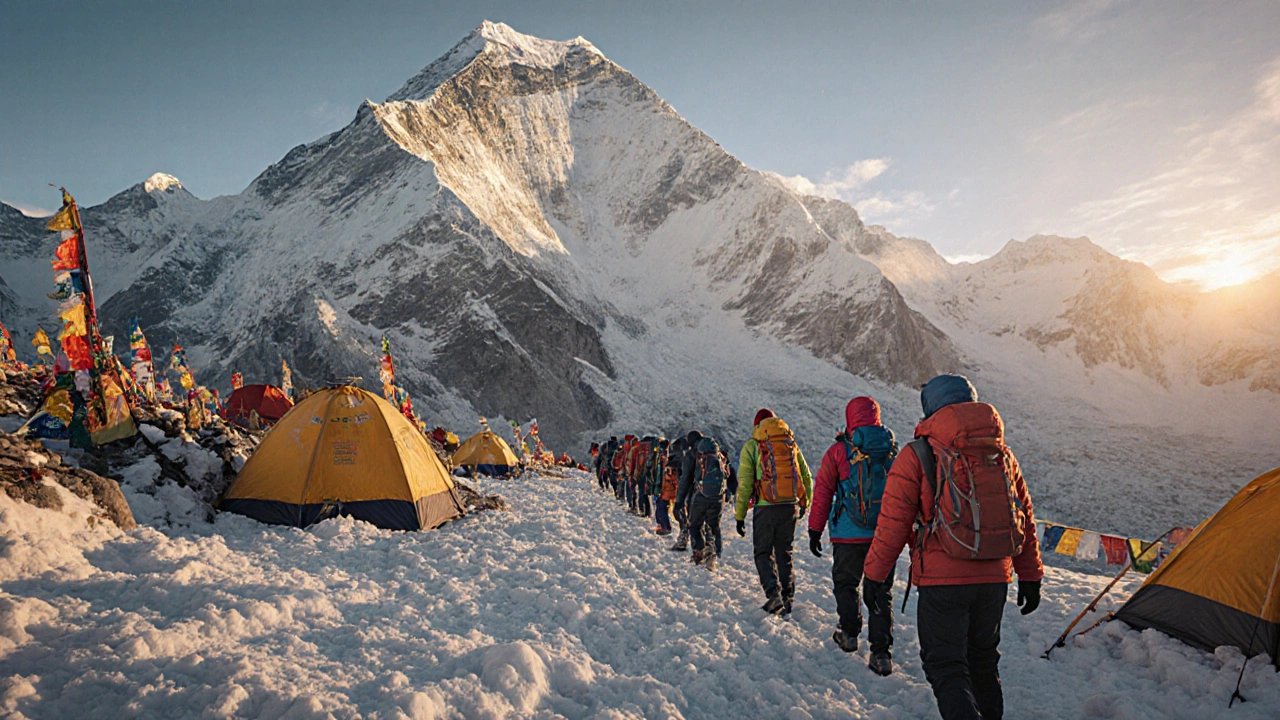SEARCH
Mount Everest Trek Cost – What You Need to Know
When planning a Mount Everest trek cost, the total amount of money you need to complete the Everest Base Camp journey from Nepal or Tibet, you quickly realize it’s more than just a price tag. It encompasses Everest Base Camp trek, a 12‑14 day high‑altitude hike that ends at 5,364 m, plus permit fees, government‑issued charges for entry, trekking and climbing permits. Adding high altitude gear, specialized clothing, boots and sleeping bags designed for sub‑zero conditions and your personal travel budget, the money set aside for flights, insurance and meals completes the financial picture. Understanding how these pieces fit together helps you avoid surprise expenses and plan a realistic adventure.
Breaking Down the Expenses
The first line item most trekkers meet is the permit fees. In Nepal, a standard trekking permit (TIMS) costs about $20, while the entry permit for the Sagarmatha National Park adds another $30. If you aim to cross into Tibet, the Chinese government requires an additional $125 permit plus a $60 travel tax. These fees are non‑negotiable and must be paid before you step onto the trail, so they form a solid base for your overall budget.
Next up is the gear you’ll wear and sleep in. High altitude gear is pricey because it has to perform in extreme cold and low oxygen. A down jacket suitable for -20°C runs $200‑$300, insulated boots $150‑$250, and a four‑season sleeping bag $250‑$400. Renting is an option in Kathmandu, but rental costs ($30‑$50 per night) add up quickly if your trek lasts two weeks. Most travelers buy the essential pieces once and reuse them for future climbs, turning the expense into a long‑term investment.
Travel budget covers flights to Kathmandu or Lhasa, airport transfers, and internal transport to the trailhead. Round‑trip flights from major Asian hubs average $800‑$1,200, while a domestic flight to Lukla, the gateway to Everest, is typically $150‑$200. Add $30‑$50 for a ground transfer from Kathmandu to the trailhead, and you have a solid figure for the logistics side. Travel insurance that covers high‑altitude rescue costs another $100‑$150, a must‑have for any trek above 5,000 m.
Beyond the obvious costs, many hikers overlook daily expenses on the trail. A basic tea house meal costs $5‑$10, while a night in a dormitory‑style room averages $15‑$25. If you prefer private rooms, expect to pay $30‑$50 per night. Tips for guides and porters are usually 10‑15 % of the total cost, but they’re essential for good service and safety. Adding these daily bits can push the total budget by $300‑$500.
Season matters, too. The pre‑monsoon window (March‑May) and post‑monsoon (late September‑November) are the most popular, and demand drives up prices for permits, flights, and lodging. Traveling in the off‑season can shave off 10‑20 % of the total, but you’ll face colder temperatures and a higher likelihood of trail closures. Weigh the trade‑off between cost savings and comfort when picking your dates.
Putting all these pieces together, a typical solo trek from Kathmandu to Everest Base Camp costs between $2,500 and $3,500, while a group package can bring the price down to $2,000‑$2,800 thanks to shared guide and transport fees. Whether you choose to go DIY or join an organized expedition, knowing where each dollar goes lets you set a realistic budget and avoid unpleasant surprises on the mountain.
Below you’ll find a curated collection of articles that dive deeper into each cost component, offer budgeting spreadsheets, and share real‑world examples from trekkers who have walked the trail. Use them to fine‑tune your plan and make sure every rupee works for you as you chase the world’s highest summit.

Mount Everest Trek Cost 2025: Complete Budget Guide
Discover the full cost of a Mount Everest trek in 2025, broken down by permits, gear, guides, and hidden fees. Learn budgeting tips, agency selection, and budget vs luxury options.
Continue reading